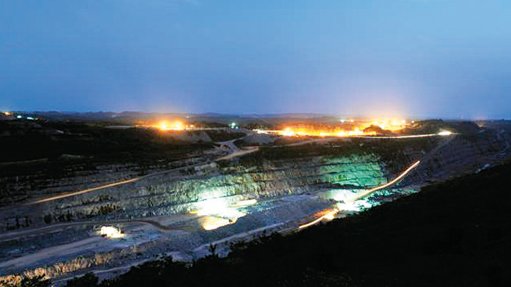
Name: Iduapriem mine.
Location: The mine is located in the western region of Ghana, some 85 km north of the coastal city of Takoradi and about 8 km south-west of the town of Tarkwa.
Controlling Company: AngloGold Ashanti.
Brief Description: The Iduapriem openpit comprises the Iduapriem and Teberebie properties in a 110 km2 concession.
Brief History: A draft feasibility study on Iduapriem was completed in June 1989 and a revised feasibility study in 1990. In October 1991, Golden Shamrock began construction of a 1.36-million-tonne-a-year semiautogenous (SAG) and carbon-in-pulp (CIP) plant.
Iduapriem started mining operations in early August 1992, with the first gold pour achieved in September of that year. In April 1995, Golden Shamrock approved a proposed expansion of the milling capacity to 2.8-million tonnes a year and, in May 1997, Golden Shamrock completed the new heap-leach plant and the upgrade of the carbon-in-leach plant.
In 2002, Ashanti upgraded the plant capacity further to four- million tonnes a year. In mid-April 2004, the merger of AngloGold and Ashanti Goldfields was completed forming AngloGold Ashanti. AngloGold Ashanti extended the capacity of the plant again in 2009 after the merger, with the plant currently operating at 4.5-million tonnes a year.
Products: Gold.
Geology/Mineralisation: All gold mineralisation occurs within four specific zones, or reefs, and are unrelated to metamorphic and hydrothermal alteration events. The four reefs recognised are the A, B, C and D reefs, which are equivalent to the Tarkwaian subbasal, Basal (or Main), Middle (or West) and Breccia reefs respectively. The Main and West reefs are oligomictic, comprise well sorted conglomerates and have been mined using underground methodology for more than a century. The subbasal and Breccia reefs have a lower gold tenor and are polymictic containing well rounded and angular fragments. At Ajopa, the reefs strike south-west to north-east and dip to the north-west. Only the B and C reefs (Main and Middle reefs) are consistently intersected and modelled. The gold is fine grained and free. The main ancillary mineral is magnetite.
Reserves: Proven and probable reserves as at December 31, 2015, were estimated at 52.52-million tonnes, grading 1.34 g/t of gold.
Resources: Exclusive mineral resources as at December 31, 2015, were estimated at 73.18-million tonnes, grading 1.36 g/t of gold.
Mining Method: Iduapriem is an openpit mine, which uses contract miners.
Major Infrastructure and Equipment: Surface infrastructure associated with Iduapriem’s operation includes a primary crusher, an overland conveyor, a CIP processing plant next to the main office building, a tailings storage facility and two camp areas for contractors and company employees.
The current processing plant treats free-milling material from opencast mining, using a conventional crush-SAG-ball milling circuit and leaching.
The mine fleet consists of two Lieb 9250 excavators and seven CAT 777s allocated to each excavator.
Prospects: AngloGold Ashanti has an extensive pipeline of project opportunities planned, targeted mainly at energy cost savings and mine-life extensions. These include accessing additional mineral resources at Iduapriem, which will entail exploration within the concession and a revision of the mine plan.
Contact Person: Senior VP investor relations and group communications – global, Stewart Bailey.
Contact Details:
AngloGold Ashanti,
tel + 27 11 637 6000,
email sbailey@anglogoldashanti.com, and
website http://www.anglogoldashanti.com.